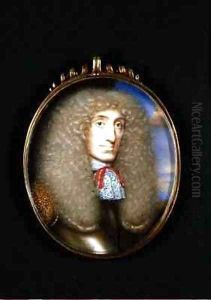Lewis Cross Paintings
Lewis Cross was an American painter, born in Oswego, New York, in 1872. He was primarily known for his landscape paintings, particularly those depicting the rural landscapes and coastal scenes of the United States. Although not as widely recognized as some of his contemporaries, Cross contributed to the American art scene during a time of significant change and evolution in artistic styles and methods.
Cross’s early life and education remain relatively obscure, but it is known that he developed an interest in art at a young age. He pursued this interest through formal education and likely received training at an art institution, which was a common practice for artists of his time. Throughout his career, Cross worked with both oil and watercolor mediums, showcasing a versatility in his artistic abilities.
During his lifetime, the art world was experiencing the influences of Impressionism and the beginnings of Modernism. However, Cross maintained a more traditional approach to his work. His paintings often captured the serene and bucolic qualities of the American countryside. Cross’s style was characterized by a refined use of color and attention to detail, which brought a sense of realism and tranquility to his works.
Despite a lack of extensive documentation regarding his exhibitions and sales, it is known that Cross’s paintings were exhibited in various galleries and found an audience among art collectors and enthusiasts of the period. His work was part of the larger movement of American landscape painting, which included artists who aimed to capture the unique qualities of the American environment.
Lewis Cross continued to paint and contribute to the art world until his death in 1929. His legacy, while modest in comparison to some of his more famous peers, remains a part of the tapestry of early 20th-century American art. His paintings are now held in private collections and occasionally appear in auctions, where they are appreciated for their quiet beauty and traditional representation of American landscapes.
